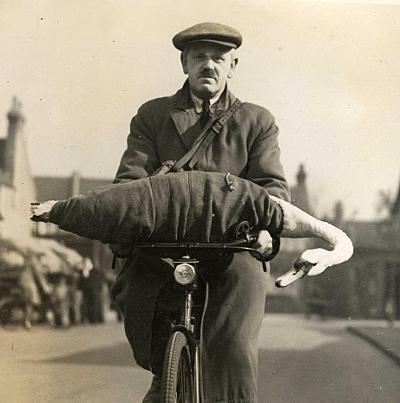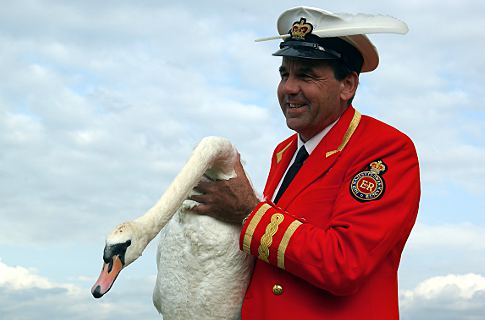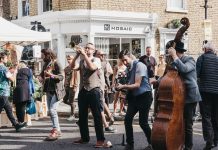Swans are considered by many Londoners, young and old alike, to be the avian royalty of the Thames. It’s not just thanks to their graceful glides across the water, as a new exhibition explains it’s also a result of 900 years of regal tradition.
Popular on LondonNet
Each year for nine centuries the Thames has played host to the ritual of ‘Swan Upping‘, a census of the mute swan population on stretches of the river in the counties of Middlesex, Surrey, Buckinghamshire, Berkshire and Oxfordshire. As the new exhibition at River & Rowing Museum, Henley on Thames explains the annual count is both colourful and vital to conservation.
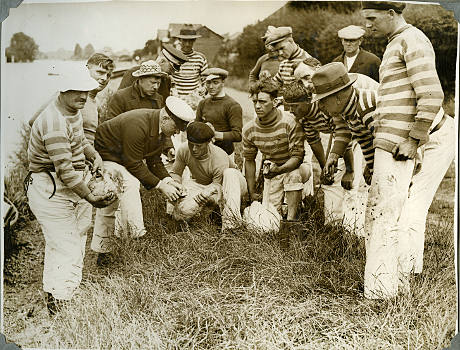
The folk who do the sums are far removed from the bean-counting-beardies usually associated with this kind of pedantic occupation. The ‘Swan Uppers’ as they are known are led by the Queen’s Swan Marker, currently Mr David Barber. The uppers themselves are made up of the Royal Swan Uppers and the Swan Uppers of the Vintners’ Company and the Worshipful Company of Dyers’. They’re a colourful bunch replete with traditional attire and regalia.
Each year in the third week of July they set off on a 79 mile journey up river in a fleet of six traditional Thames rowing skiffs. They cry “All up!” whenever a brood of cygnets is sighted and the birds are weighed, measured, checked and ringed.
“This quintessentially English ceremony was originally a way of marking ownership of swans, at a time when the birds were regarded as a delicious dish at banquets and feasts.” explains the museum.
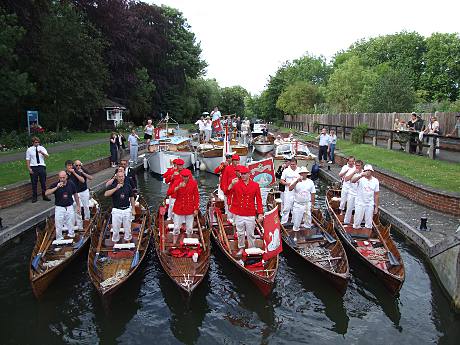
“Today the primary purpose of the event is conservation. The Swan Uppers work with the Oxford University Zoology Department to monitor the welfare of the birds. Since the 1980s, a Thames swan’s life expectancy has increased from 3 to 8 years, helped by improved awareness of the dangers of electrical cables, plastic waste and lead poisoning by fishermen”.
Indeed from a healthy total population of 1,300 birds in the mid-1960s, numbers fell from that peak of 76 breeding pairs with cygnets to as low as just seven pairs in 1985 on the London to Henley stretch of the river. In 2010 the number of pairs had increased to 32, with 50 pairs if including the entire stretch up to Abingdon.
The River & Rowing Museum’s exhibition provides a visual and information rich guide to this quirky, yet charming tradition. They’re keen to emphasise the educational benefits too.
“I am delighted to have been involved with the development of the educational project and the exhibition about Swan Upping with the River & Rowing Museum.” said David Barber, The Queen’s Swan Marker.
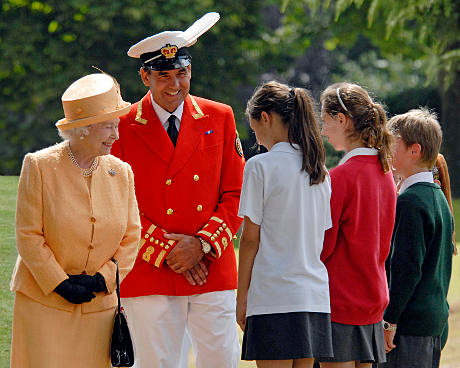
“The museum is a wonderful resource for people of all ages to learn about the river, particularly children, and it is vitally important to teach people about rivers and the wildlife they support. Rivers form part of our heritage and their conservation is of paramount importance not only to the creatures that live on or near them, but to the population at large.”
“I am pleased that Swan Upping provides an opportunity to raise the profile of conservation on the river while bringing much pleasure and increasing the knowledge of the children we encounter during the week.”
Peter Clee, June 2013
This year’s Swan Upping takes place from 17 July 2013. The exhibition is at the River & Rowing Museum.
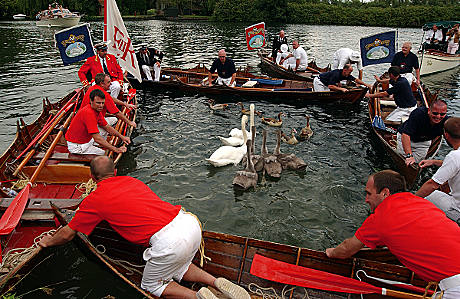
More Info:
River & Rowing Museum
Swan Upping (Royal.gov.uk)
Swan Upping (Royalswan.co.uk)
Photos – from top to bottom:
Swan Upping. David Barber with Her Majesty The Queen – Copyright M Swift
Just below Richmond Lock July 1928
Swan Uppers toast Her Majesty The Queen. Image copyright Sue Milton
David Barber with Her Majesty The Queen – Copyright M Swift
Skiffs encircling a family of swans to be marked
Herbert Turk Chiswick March 25 1939 crop (below)
